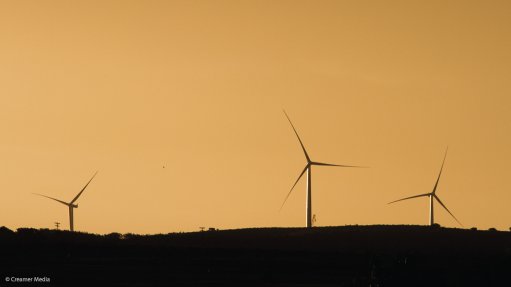
Renewables accounting for around 90% of new electricity generation in 2015
Photo by: Duane Daws
A new International Energy Agency (IEA) analysis of global energy-related carbon dioxide (CO2) emissions points to a “decoupling” of greenhouse-gas emissions from economic growth, with emissions having remained flat in 2015, notwithstanding global economic growth during the year of over 3%.
Global CO2 emissions were recorded at 32.1-billion tonnes in 2015, which was more or less in line with emissions recorded in 2013 and 2014.
The report follows the 2015 United Nations Climate Change Conference, or COP 21, which was held in Paris, France, and where a global agreement was struck to limit global warming to 1.5 °C compared with preindustrial levels.
The agreement is expected to further spur low-carbon energy technologies and improve prospects for the roll-out of energy-efficiency solutions. COP 21 is also expected to result in the introduction of global carbon pricing, either through taxes of market-based instruments, and to make investments in fossil fuel power projects more risky, unless there are associated mechanisms to either capture carbon, or compensate for the emissions.
The IEA attributed the 2015 trajectory partly to the rising role of renewable energy, with renewables accounting for around 90% of new electricity generation in 2015.
“In the more than 40 years in which the IEA has been providing information on CO2 emissions, there have been only four periods in which emissions stood still or fell compared to the previous year. Three of those – the early 1980s, 1992 and 2009 – were associated with global economic weakness,” the agency said in a statement.
It argued, therefore, that the recent stalling in emissions was significant as it came amid global growth of 3.4% in 2014 and 3.1% in 2015, as calculated by the International Monetary Fund.
“The two largest emitters, China and the US, both registered a decline in energy-related CO2 in 2015. In China, emissions declined by 1.5%, as coal use dropped for the second year in a row.”
Coal generated less than 70% of Chinese electricity, ten percentage points less than had been the case in 2011. Over the same period low-carbon sources jumped from 19% to 28%, with hydro and wind accounting for most of the increase.
In the US, emissions declined by 2%, as a large switch from coal to natural gas use in electricity generation took place.
However, increasing emissions in most other Asian developing economies and the Middle East, together with a moderate rise in Europe, offset the decline observed in the two major emitters.